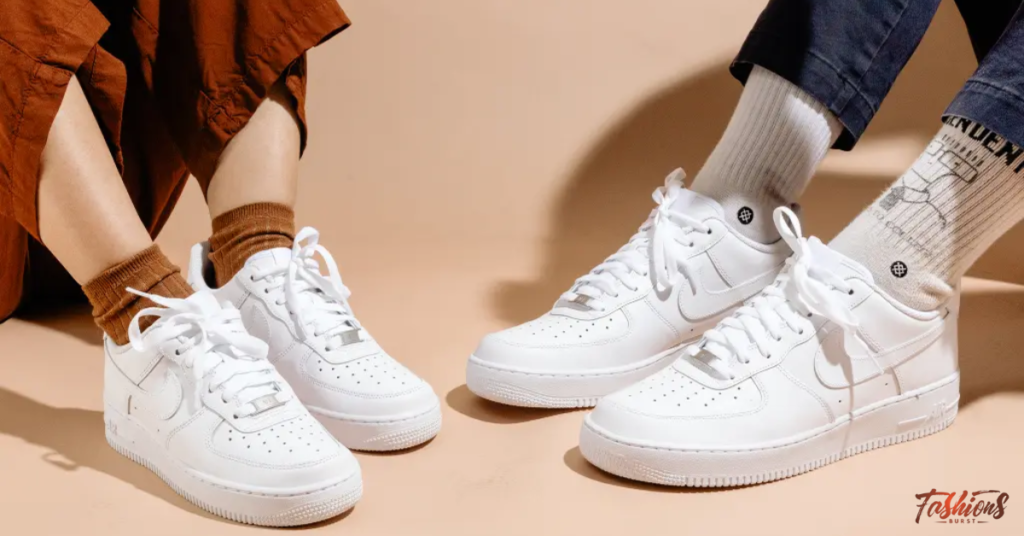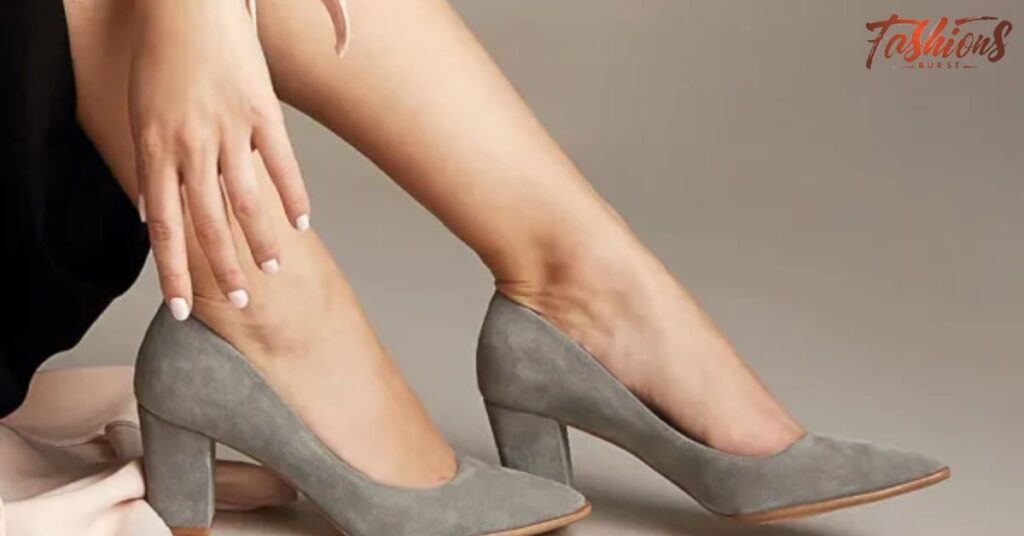It is a question that prompts the exploration of fashion boundaries. In modern times, many argue that gender should not dictate footwear choices, emphasizing personal comfort and style over traditional norms.
This debate reflects a broader cultural shift towards gender inclusivity and self-expression. It encourages individuals to embrace their unique fashion preferences without fear of judgment, fostering a more diverse and accepting society.
How Do Men’s and Women’s Shoes Differ?
Men’s and women’s shoes differ primarily in their design and fit. Men’s shoes are typically wider and larger overall, reflecting the average male foot size and shape. In contrast, women’s shoes often feature narrower widths and smaller sizes to accommodate the average female foot structure.
Additionally, there are differences in style and aesthetics between men’s and women’s shoes. Men’s shoes tend to have a more masculine design, with simpler and useful features. On the other hand, women’s shoes often incorporate more decorative elements, such as embellishments, colors, and patterns, catering to a wider range of fashion preferences.

Physical Differences
Physical differences between men’s and women’s shoes primarily stem from variations in foot anatomy. Women generally have narrower and smaller feet compared to men, leading to differences in shoe widths and sizes. As a result, women’s shoes are often designed to be slimmer overall, with a more contoured fit around the heel and forefoot.
Effects of Weight
The effects of weight play a significant role in the design of men’s and women’s shoes. On average, women tend to have around 15% less muscle mass than men, resulting in lighter body weight. As a result, women’s shoes often feature lighter and softer midsoles compared to men’s shoes, providing cushioning and support tailored to their lower body mass.
Furthermore, the impact of weight distribution influences the construction of the outsole, particularly in athletic footwear. Women’s shoes typically incorporate deeper flex grooves in the forefront of the outsole to accommodate their lower-body mass, aiding in flexibility and movement during activities. These design adjustments ensure that women’s shoes effectively support their unique biomechanical needs while maintaining comfort and performance.
Never-Ending Color Options
The never-ending color options in women’s shoes provide a vast array of choices for fashion enthusiasts. Unlike men’s shoes, which often feature more subdued tones like black and brown, women’s shoes come in a diverse spectrum of colors, ranging from vibrant hues to soft pastels.
This extensive color palette allows individuals to express their personalities and preferences through their footwear, adding a pop of color to any outfit. Whether opting for classic neutrals or bold statement shades, the abundance of color options in women’s shoes ensures that there is something for every style and occasion.
Women’s Shoes Cost Way Less
Women’s shoes are generally more affordable than men’s shoes, thanks to various factors like higher demand and a wider selection. This affordability allows women to access trendy footwear options without straining their budget. With a plethora of styles available at lower prices, women can effortlessly elevate their fashion game without breaking the bank.
Endless Styles and Designs
When it comes to shoes, women have endless styles and designs to choose from. Whether it’s casual sneakers, elegant heels, or practical boots, the options seem limitless. From traditional to contemporary, women’s footwear caters to diverse tastes and preferences, ensuring there’s something for everyone. With such a wide variety available, women can effortlessly find the perfect pair to complement any outfit or occasion.
What to Avoid
When considering wearing women’s shoes, there are some factors to be cautious about. Specifically, certain shoe styles, such as athletic shoes designed for specific purposes, may not provide the necessary support or fit when worn by men.
For example, differences in foot anatomy between men and women mean that athletic shoes may have variations in width and design that could lead to discomfort or potential injury if not suited to the wearer’s gender. Therefore, men should avoid wearing athletic shoes designed specifically for women to ensure optimal performance and comfort.
How to buy women’s shoes as a man Nike
Buying women’s Nike shoes as a man involves considering a few key factors to ensure the right fit and style. First, determine your size in women’s shoes by using a conversion chart or trying on different sizes in-store.
Keep in mind that women’s sizes are typically 1.5 to 2 times larger than men’s sizes. Next, consider the style and design of the Nike shoes you prefer, whether it’s sneakers, running shoes, or athletic footwear. Finally, browse through the women’s Nike collection online or visit a Nike store to find the perfect pair that suits your taste and meets your needs in terms of comfort and performance.

Can men wear women’s shoes? Here’s what I think…
The question sparks a debate on gender norms and fashion boundaries. In my opinion, it ultimately comes down to personal choice and comfort. If a man feels confident and comfortable in women’s shoes and they fit well, then there’s no reason why he shouldn’t wear them. It’s about breaking free from traditional stereotypes and embracing individual style preferences. So, if you’re considering trying out women’s shoes, go ahead and rock them with confidence!
The history of men wearing women’s shoes
The history of men wearing women’s shoes traces back centuries, reflecting shifts in fashion and societal norms. In medieval times, knights would wear their ladies’ shoes as a symbol of chivalry, continuing into the Renaissance era as a display of wealth and status.
Today, the trend persists, with celebrities like Kanye West and Young Thug boldly sporting women’s shoes on the red carpet. This historical context challenges gender stereotypes and encourages self-expression through fashion, illustrating the ever-evolving nature of style and identity.
What is the difference between men’s and women’s sneakers?
The difference between men’s and women’s sneakers lies primarily in their design and fit. Women’s sneakers typically feature narrower widths and smaller sizes compared to men’s, catering to the average differences in foot anatomy between genders.
Additionally, women’s sneakers often showcase more feminine colors, patterns, and designs, reflecting diverse style preferences. While both offer comfort and performance, these subtle variations ensure that sneakers meet the unique needs and tastes of individuals, regardless of gender.
How do you convert women’s shoe sizes to men’s sizes?
Converting women’s shoe sizes to men’s sizes involves a straightforward adjustment based on standard conversion charts. Generally, women’s sizes are approximately 1.5 to 2 times larger than men’s sizes.
For example, if a woman wears a size 8 in women’s shoes, she would typically wear a size 6.5 or 7 in men’s shoes. However, it’s essential to note that this is a general guideline, and precise fit may vary depending on the brand and style of the shoe. Therefore, it’s recommended to try on different sizes to find the most comfortable and accurate fit.
A standard conversion can be made using the following size conversion chart:
- 7 1⁄2 in women’s size = 6 1⁄2 in men’s size.
- 8 in women’s size = 7 in men’s size.
- 8 1⁄2 in women’s size = 7 1⁄2 in men’s size
What are some of the best women’s sneakers for men?
Some of the best women’s sneakers for men include popular styles from brands like Nike, Adidas, and Puma. These sneakers often offer a wide range of sizes that can accommodate men’s feet comfortably.
Additionally, women’s white sneakers stand out as a timeless and versatile choice that can complement various outfits. Women’s Jordans are also notable, as they often feature unisex designs that appeal to men seeking stylish and comfortable footwear options. Ultimately, the best women’s sneakers for men are those that provide a combination of style, comfort, and durability, regardless of gender labeling.

Men and Heels? Sounds Controversial?
Historically, the idea of men wearing heels has been controversial, tied to societal perceptions of gender and masculinity. While high heels have been traditionally associated with femininity, there’s a growing acceptance of men wearing heels as a fashion statement or form of self-expression.
However, it remains a topic of debate, with some questioning traditional gender norms and others adhering to more conventional views. Despite the controversy, brands like Cross Sword are pioneering designs that cater to men’s comfort and style preferences, challenging preconceived notions and encouraging individuals to embrace diverse forms of expression.
Read This Also: Mezcal Old Fashioned: A Modern Twist On A Classic Cocktail
Frequently Asked Questions
Can men’s feet fit in women’s shoes?
Yes, depending on the size and width, men’s feet can fit in women’s shoes.
Is there a difference between men’s and women’s shoes?
Yes, men’s and women’s shoes differ in size, width, and often design.
Can a man wear women’s boots?
Yes, a man can wear women’s boots if they find a comfortable pair.
Can females wear men’s shoes?
Yes, females can wear men’s shoes if they find a size and style that suits them.
Conclusion
Men wearing women’s shoes is a matter of personal choice and comfort. It challenges traditional gender norms and encourages individuals to express themselves authentically through fashion. Embracing diversity in footwear choices fosters a more inclusive and accepting society.
Ultimately, breaking free from rigid gender norms allows for greater self-expression and individuality. By challenging outdated stereotypes, we can create a more inclusive and diverse fashion landscape. The ability to wear women’s shoes should be celebrated as a reflection of personal style and identity.

Joli, a seasoned fashion author with 3 years of expertise. Explore captivating insights, trend analyses, and style guides curated by a passionate fashion enthusiast on our website.







